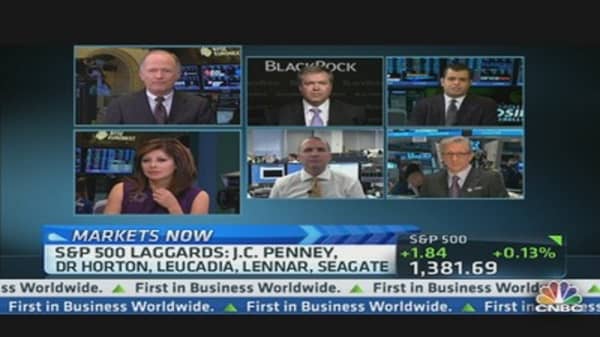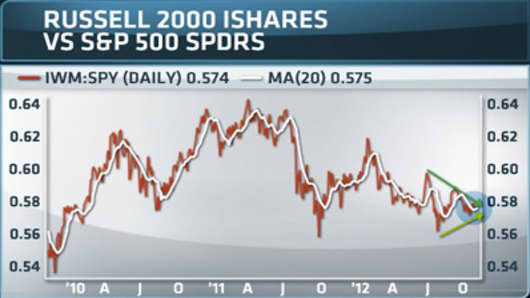"Public sentiment is everything. With public sentiment, nothing can fail. Without it, nothing can succeed." - Abraham Lincoln
Every single day that goes by, the U.S. gets closer and closer to the dreaded "fiscal cliff," which would result in tax increases and spending cuts at a time when many would argue the economy is just one bad quarter away from another recession. Are such fears warranted now that Obama has won a second term? Maybe, maybe not.
Predictions are often meaningless unless one is actually betting on a particular prediction becoming reality. Fortunately, when it comes to markets, we can see this real-time through the behavior of price. (Read More: Round 1 - Traders Watch Sandy's Impact and Ding! 'Fiscal Cliff')
How can one possibly gauge what the market thinks the odds are of the fiscal cliff either 1) happening, or 2) happening and not being that damaging? It is actually fairly simple — track the performance of those areas of the stock market most sensitive to a domestic shock to gross domestic product (GDP) and revenue growth. (Read More: Fiscal Cliff - CNBC's Complete Coverage)





